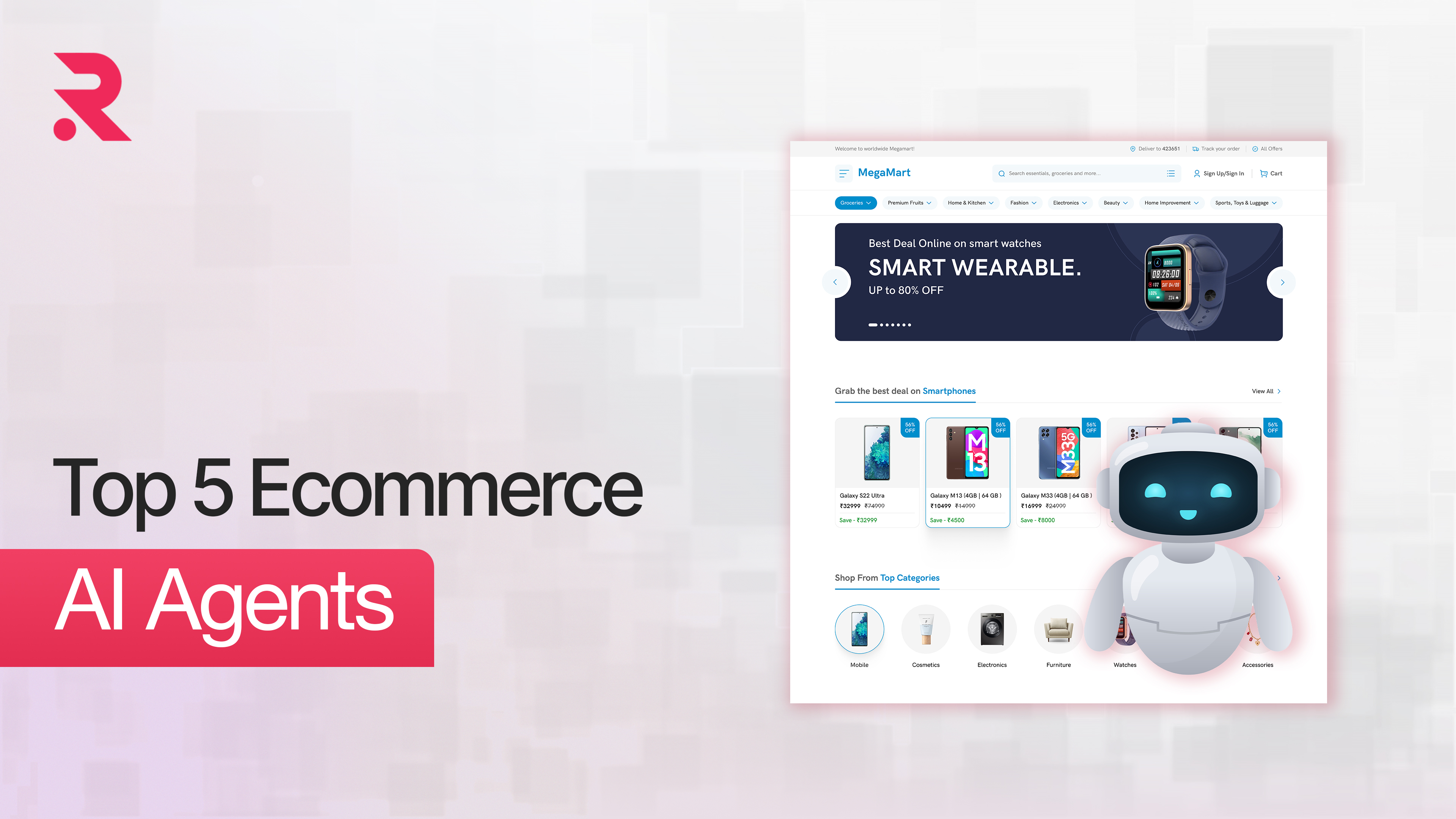Nine Serious E-commerce Perils That Are Turning Into A Major Concern
- Jun 8, 2021
- By Tarun

No doubt! Where there’s money, there’s a threat. Day by day, online security threats are increasing and causing mayhem in the eCommerce world. By the way, do you know, the eCommerce sector encounters up to 32.4% of threats yearly? Yes, it does! But do not bother yourself, we are going to make you aware of all the types of E-threats in this blog.
What are eCommerce Threats?
E-commerce threats are the threats and issues that are occurring due to the unfair use of the Internet. They are mainly performed with the intention of fraud, stealing data or breach of security. There are various kinds of virtual threats such as e-payment threat, data misuse threat, debit/credit card frauds, hacking of accounts and a lot more.
Most commonly, the hackers aim at the e-commerce store owners, their employees and their customers by making use of a variety of countless pernicious techniques. There are just a lot of virtual threats every e-commerce store faces. We are going to make you aware of all of them further in this blog.
Top Nine E-commerce Security Perils
Financial Frauds
As I have already said, where there’s money, there are a lot of risks and threats. Financial frauds are one of the most common frauds that are seen in the virtual world. Since the money is being exchanged through the internet, fraudsters have been trying hard to take it all. They have become a headache in the corporate world.
Moreover, there are several types of financial frauds prevailing in the e-commerce world. However, we are going to talk about the two most ordinary of them.
- Credit Cards FraudThis kind of fraud happens when cybercriminals make use of the data of a stolen credit card to purchase the products in your eCommerce business. Generally, in all such cases, the billing and shipping addresses differ.You can curb and detect such activities by installing Address Verification System or AVS. The other form of credit card deceit is when the impostor takes your details and uses them to get a new credit card.
- Fake Returns and Refunds FraudThese fraudsters usually do all the unauthorised transactions and make the businesses go into huge losses. Among these, some of them also indulge in refund frauds. They file unreal hoax requests for the returns.
Spamming
Another threat for your e-commerce store is “Spamming”. Some fraudsters are most likely to send you links via your social handle direct messages or email. Also, they can leave such ‘trap’ links in their messages or comments on the contact forms and blog posts. As soon as you tap on those links, they will take you to their spam sites. And that’s when they’ll win and you’ll be fully trapped in their motive.
Also, you know what, these mass mailing of links can quickly become a much severe problem. Other than decreasing the security of your site, spamming also alleviates its performance and speed.
That’s why you must stay fully alert and aware before clicking on any unauthorised and strange link.
Phishing
In phishing, what the hackers usually do is, pretend to be a legitimate and authorised source and trick you into adhering to some of the steps that they ask you to do. For example, Phishing has been going on a lot on Instagram. What they do is, send a text message saying that ” We are from Instagram and we need you to follow these instructions, if you wish to verify your account.” Some of us fall for these tricks (which is quite normal) whereas some of us are smart enough to know that it’s a scam.
Not only this, but also they present hoax copies of your website or other well-reputed sites to fool the users into trusting them. If the clients fall into their trap, then they end up giving their confidential information. Hence, they get fooled and suffer huge losses.
Malware
The hackers’ design some pernicious software and then install them on your computer systems and IT without your awareness of it. These harmful programs contain trojan, spyware, viruses and ransomware. Besides, the computer system of admins, customers and all the other users have Trojan Horses installed on them. Such programs can conveniently swipe off any sensitive information that’s present in the infected systems. Hence, this might also infect the website.
Manipulation of the Known Vulnerabilities
The attackers keep their eyes open 24×7. They are always on the lookout for some vulnerabilities that might be in your eCommerce store. Most often, the e-commerce stores are vulnerable to XSS or cross-site scripting or SQL injection. Let’s have a briefing about both these Vulnerabilities:
- SQL InjectionThis is an unfair and harmful technique where the hackers attack your question submission forms so that they will be able to have access to the database of your e-store. Moreover, they also corrupt your databases by using infectious code. They collect the data and then wipe off the whole trail.
- XSS or Cross-Site ScriptingIn this, the attackers generally install a snippet of JavaScript on your e-store to target your customers and online visitors.All such codes can take access to your customers’ cookies. Moreover, to stay safe from such attacks you can implement CSP or content security policy.
Brute Forces
The virtual environment also has some hackers/impostors who make use of brute force to crack the password of your business or they directly attack the admin panel.
These fake and fraud programs get in touch with your website and then they make efforts to get the password of your website. To get rid of all this and to stay on a safer side, make sure to use complex and strong passcodes that are tough to guess. In addition to this, try changing your password frequently.
Bots
Some muggers create special bots to hack your website. These bot scuff your site to steal information about the prices and inventory. Usually, these hackers are your opponents. They make use of this data to reduce or change the prices on their site to reduce the revenue and sales of your website.
MITM or Man In The Middle
There is another kind of threat where the hacker may listen to the conversation going on between your user and the eCommerce store. This usually happens when the customer/user is connected with vulnerable and unsafe Wi-Fi networks. Hackers and attackers take advantage of this and cause harm to your store or website.
Rootkit
It is a group of software tools that allows administration level and remote control access over a particular computer or a group of computers. Once the access is acquired, the rootkit can undertake various malicious tasks. Moreover, they come well equipped with password thieves, keyloggers and antivirus disablers.
But how are they installed? They are installed suspiciously by hiding in an authorised software. When you permit that software to do some changes to your operating system, the rootkit directly gets installed in the computer and hangs there for the attacker to activate it. Various other ways of rootkit distribution consist of malicious links, phishing emails and downloading the software from doubtful sites.
Do You Know?
- About 60% of the companies have to shut down their business within half a year because they have been attacked by online hackers.
- Approximately 29% of the eCommerce site traffic has the pernicious motive of cyberattacks.
- ccording to the reports, e-commerce deceit results in the loss of about $660,000 per hour.
- About 25% of the security attacks and data misuse are focused on payment and all e-transactions.
Another threat for your e-commerce store is “Spamming”. Some fraudsters are most likely to send you links via your social handle direct messages or email. Also, they can leave such ‘trap’ links in their messages or comments on the contact forms and blog posts. As soon as you tap on those links, they will take you to their spam sites. And that’s when they’ll win and you’ll be fully trapped in their motive.
Also, you know what, these mass mailing of links can quickly become a much severe problem. Other than decreasing the security of your site, spamming also alleviates its performance and speed.
That’s why you must stay fully alert and aware before clicking on any unauthorised and strange link.
But how are they installed? They are installed suspiciously by hiding in an authorised software. When you permit that software to do some changes to your operating system, the rootkit directly gets installed in the computer and hangs there for the attacker to activate it. Various other ways of rootkit distribution consist of malicious links, phishing emails and downloading the software from doubtful sites.
What You Can Do to Keep Your Ecommerce Store Secured and Safe?
- SSL and HTTPS Certificates
HTTPS protocols don’t just keep the sensitive data of your user safe but also boost the rankings of your website on the search page of Google. They do this by making the data transfer secure between the users and servers. Hence, they prevent such electronic surveillance.
Are you aware of the fact that some web browsers will block the access of visitors to your site if these sorts of protocols are not in place? You must also have upgraded SSL certificates from the host. - Anti-virus and Anti-Malware software
An Anti-Virus is software that is supposed to keep all the external threats and viruses away. Moreover, a lot of Anti-Virus software prevents your system from malware as well. Securing your personal computer and other systems with an Anti-Virus keeps an eye on all these threats.
On the other hand, Anti-Malware is a program that checks, removes, and prevents malware from damaging IT systems and computers. As malware is a broader term for all s of infections such as viruses, worms, Trojans etc. That’s why securing with an effective Anti-Malware would work just fine. - Guarding the Server and Admin Panel
Make sure to use complex passwords that are tough to figure out, and then make it a routine of changing them habitually. Also, it’s good to restrict the access of users and define their roles. Each user must only perform just up to their roles on the panel. Further, allow the panel to send you the notifications whenever any foreign IP tries to have access to it. - Securing the Payment Gateway
Try to avoid keeping the information of credit card of clients on the database. In place of this, allow a third party like Stripe and PayPal to handle the transactions away from the site. This guarantees better safety for the personal and financial data of your customers. - Educating your Clients and Staff
Ensure that your customers and employees get fresh knowledge about handling the data of your user. Also, teach them how to engage with your site safely. Wipe out the details of your former employees and cancel their access to your systems.
Conclusion
Finally, we are at the end of this article on “serious ecommerce perils”. We have discussed the threats and their solutions.
To conclude, we would just say that cyber-security is very significant if you wish to get online success. Day by day, the hackers are becoming smarter, that means you need to be more alert. Also, you need to have a committed team that stays updated with the safety issues and that can offer timely protection to your sites.
The team at RVS Media Limited includes qualified people who interact with the clients. We offer rock-solid firewalls security audits and malware scanning to make sure that your website stays safe. Also, we offer eCommerce stores with the top security perils solutions.
Okay, time to wrap this up! In case, you still have any query then feel free to contact us. We are right here to help you out.
 Shopify
Shopify

















